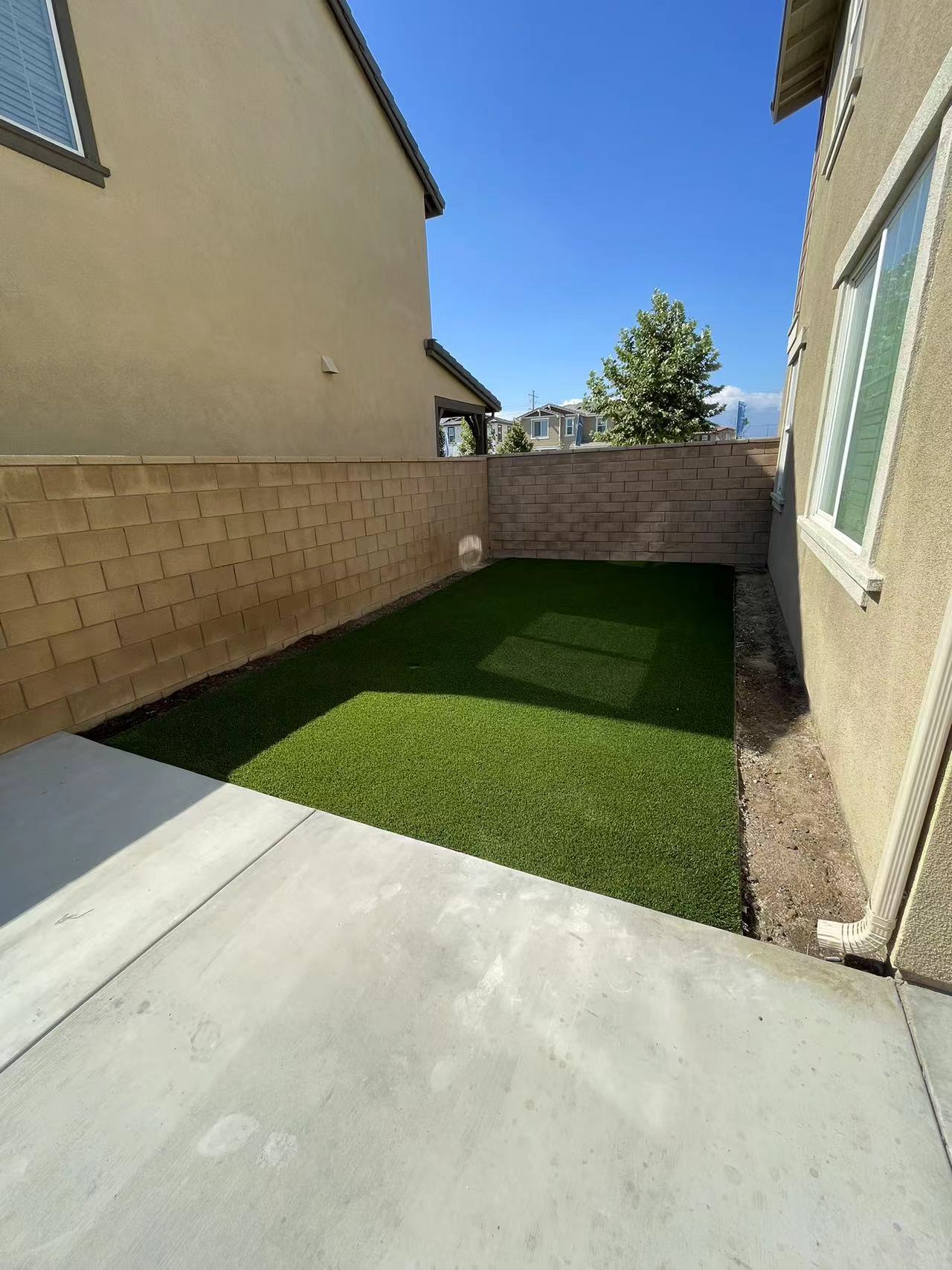Understanding how much is artificial turf
Introduction
Artificial turf has become a popular choice for homeowners seeking a low-maintenance alternative to natural grass. However, before making the decision to install artificial turf in your yard, it's important to understand the various factors that influence the cost of installation. This guide will delve into the pricing considerations associated with different types of artificial turf, the impact of factors such as area size, shape, and location, and the potential pros and cons of opting for synthetic grass.

Cost Variation Based on Turf Material
Artificial turf comes in various materials, each with its own qualities and price points. Polypropylene, polyethylene, and nylon are the most common types, and their costs vary depending on factors like durability, appearance, and suitability for different conditions.

Polypropylene:
Polypropylene is the least durable option, making it suitable for shady areas or indoor use with low foot traffic and temperatures. Prices range from $1.90 to $6.75 per square foot. While it's more affordable, it's essential to consider its limitations for outdoor use.
Polyethylene:
Polyethylene offers a natural look, softer texture, and better durability compared to polypropylene. It costs between $2.55 and $3.85 per square foot and is a preferred choice for outdoor spaces, especially for homeowners with pets.
Nylon:
Nylon is the most durable and resilient option, capable of handling heavy foot traffic, weight, and heat. It ranges from $5.05 to $5.83 per square foot. While expensive, it's commonly used for sports fields and areas with high usage.
Factors Affecting Cost
Several factors influence the overall cost of installing artificial turf:
Brand: Different manufacturers offer varying turf quality and pricing.
Blade Shape: Blade shape impacts appearance, durability, and heat resistance.
Area Size: Larger spaces require more materials and labor.
Area Shape: Curved or complex shapes increase installation difficulty.
Area Location: Installation costs can vary depending on the location (backyard, rooftop, etc.).
Additional Services and Expenses
After installing artificial turf, homeowners often consider adding complementary features to enhance their outdoor space. These may include:
Deck or Patio: Costs range from $3,918 to $10,539 for decks and $2,363 to $5,909 for patios.
Paver Walkways: Installation typically costs between $8 and $22 per square foot.
Flower Bed Planting: Prices range from $650 to $3,000 depending on size and flowers.
Gazebo: Average costs range from $5,358 to $27,000, depending on design.
Xeriscaping: Costs vary between $8,000 and $27,000 for water-efficient landscaping.
Comparing Artificial Turf and Sod Costs
While artificial turf installation is more expensive upfront, it saves on long-term maintenance costs. Sod installation is cheaper initially, but ongoing maintenance expenses can add up. Artificial turf's longevity can offset its higher initial investment, especially for larger yards.
Pros and Cons of Artificial Turf
Artificial turf offers benefits such as water conservation, low maintenance, and year-round greenery. However, it also has downsides, including its plastic composition, potential heat retention, and environmental concerns related to manufacturing waste and runoff.
DIY vs. Professional Installation
While DIY installation might seem cost-effective, the complexities of artificial turf installation often lead to mistakes that can be costly to rectify. Hiring professionals ensures proper installation, suitable blade types, and a warranty for your investment.
Understanding the costs associated with artificial turf installation is crucial for making an informed decision. Consider factors such as turf material, area size, shape, and location, along with the potential additional expenses for enhancing your outdoor space. Weigh the pros and cons of synthetic grass and determine whether professional installation is the right choice for a successful and long-lasting transformation of your yard.
FAQ About Artificial Turf
1. How do I maintain my artificial turf?
Artificial turf maintenance is minimal and not nearly as expensive as natural grass maintenance. You don’t need to water, fertilize, or mow your artificial grass. But regular upkeep is still essential if you want your synthetic grass to stay beautiful and last long.
How to take care of your fake grass:
— Remove Dust and Debris: Maintaining your turf will help ensure dust and debris don’t collect. There are many ways to keep your turf debris-free, some more effective than others. You can rinse the turf with water or use a stiff-bristled broom to remove debris. Operating a mechanical brush (known as a power brush or power broom) is the most effective debris removal method.
— Keep your artificial grass blades pointing up: If your turf is not standing upright or is forming matted clumps, use a stiff-bristled broom or power broom to put it back in an upright position.
— Regularly sanitize your artificial turf: Keep your artificial turf sanitized by applying a cleaning solution. If smells are an issue with your turf, you can also apply a deodorizer. When your pets use the turf to do their business, rinse and sanitize the area promptly.
2. Are there delivery fees with artificial grass?
Most turf installation companies will not charge a delivery fee, though this will vary from company to company.
3. How long does artificial turf last?
Artificial turf will last between 10 and 25 years, depending on the turf’s quality and how well it’s maintained.
